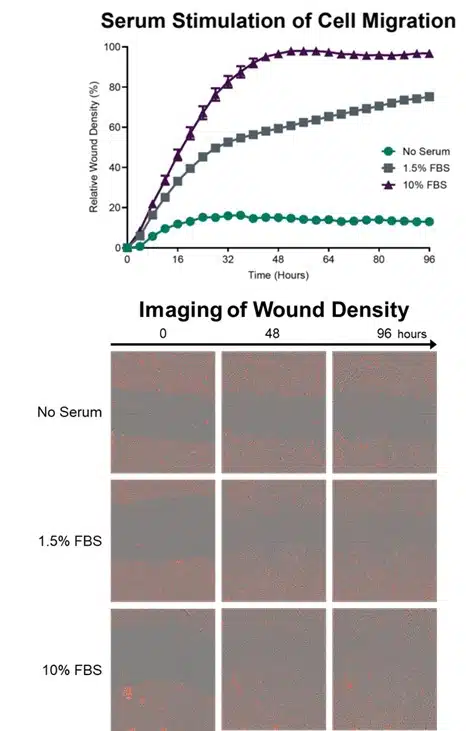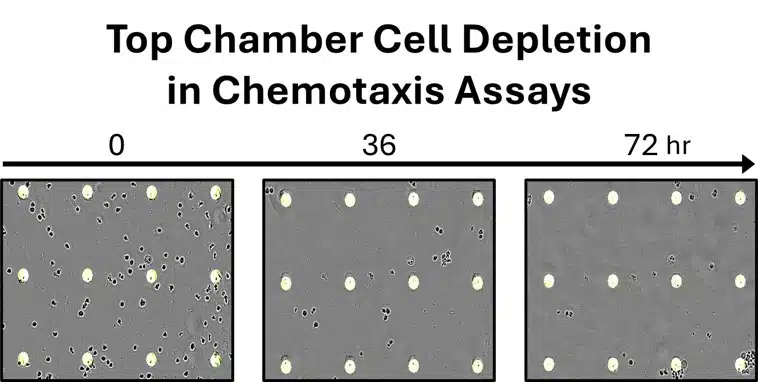
Chemotaxis assays utilizing a modified Boyden chamber assess the motility of cells by quantitating their migration toward a chemoattractant gradient.
Sensitive and Reproducible
Our cell migration assays achieve reproducible, sensitive readouts of migration rate.
Paired Cell Microscopy
All of our cell migration assays can be accompanied by microscope imaging of cells to provide detailed assay images.
Custom ECM Coatings
Variable extracellular matrix coatings can be incorporated into chemotaxis assays to model integrin-mediated cell migration.
Disease-Relevant Results
Cell migration assays are used to model immune response, cancer metastasis, and other migration-dependent clinical conditions.
Kinetic Readouts
Both the scratch wound assay and chemotaxis assay are analyzed by kinetic reads, yielding high resolution and superior accuracy.
Robust and Customizable Assay Conditions
Our expert scientists and advanced instrumentation can create a superior assay for your research needs.
Advanced Imaging for Accurate Measurements
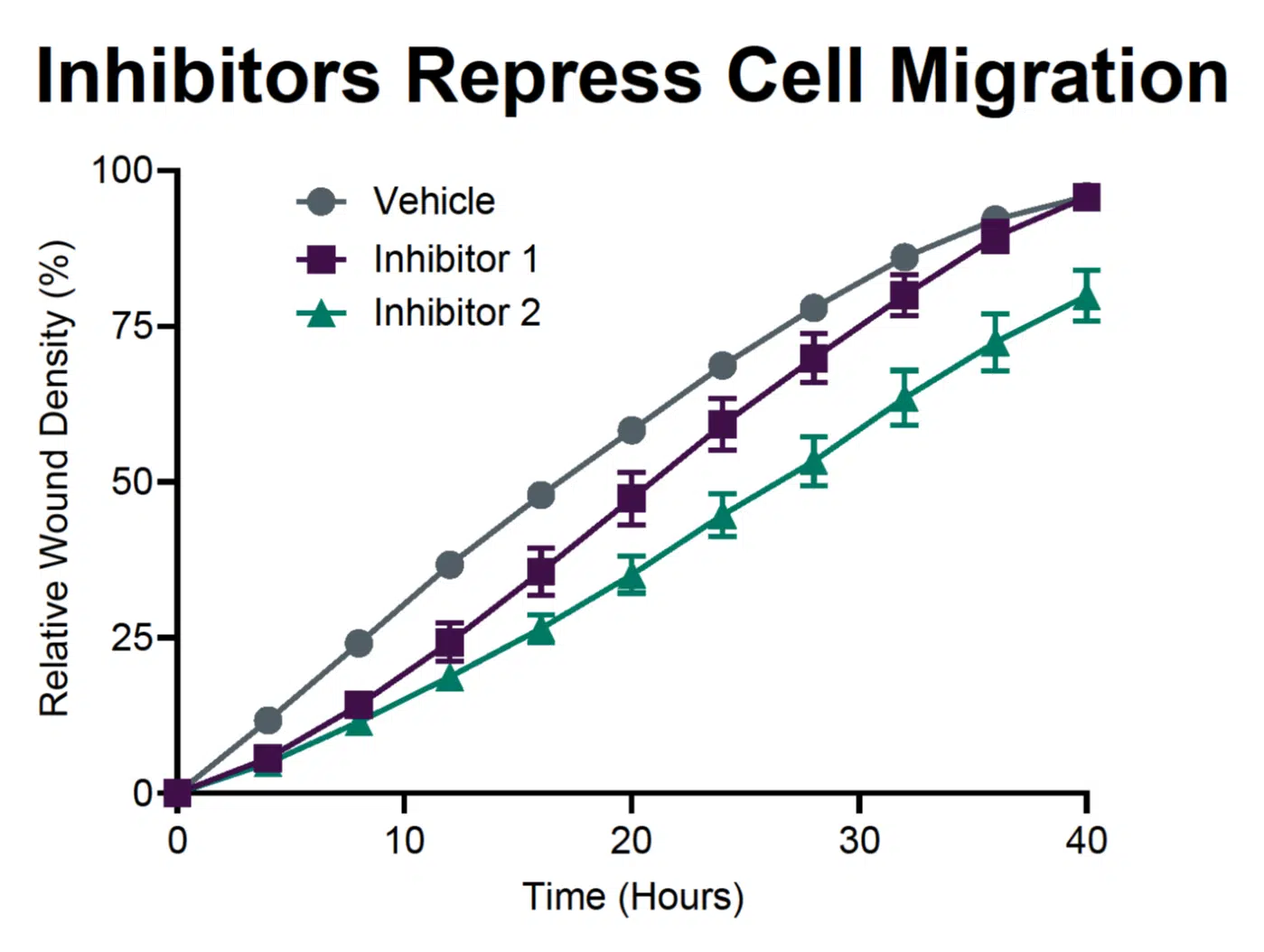
Our cell migration assays are quantitated by automated high-resolution microscopy. By imaging the exact same field at each timepoint and utilizing automated masking and density calculations, our workflow achieves the highest sensitivity. This method can resolve slight differences in cell migration activity to provide you with the most accurate results
Superior Tools Deliver Better Results
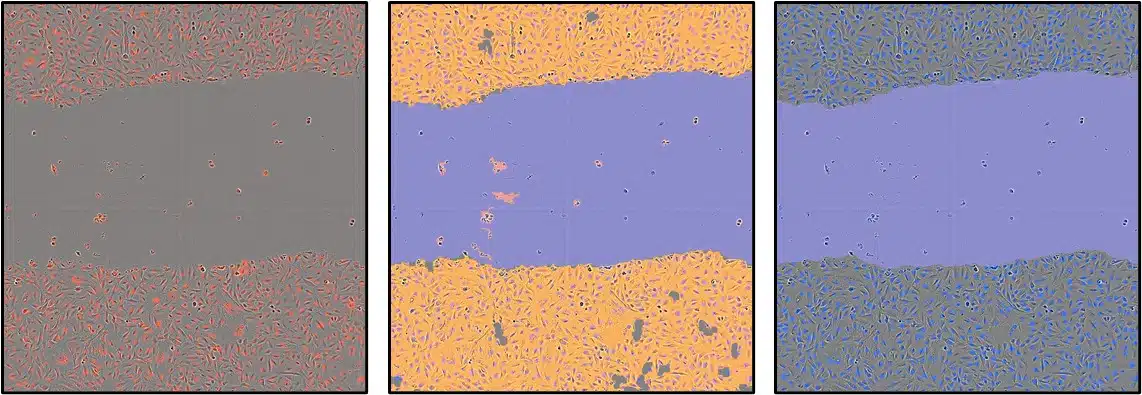
Advanced Image Analysis Provides Superior Quantitation
Our cell migration assay imaging utilizes state-of-the-art spinning disc confocal imaging, with automated analysis and quantitation for precise and sensitive measurement.
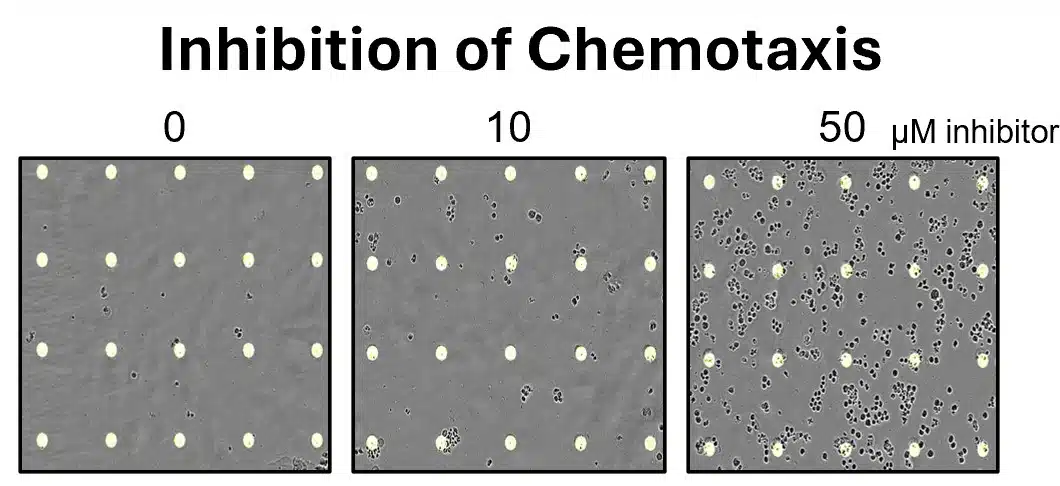
Cell Migration Assays Measure Inhibition or Enhancement of Migration
Our cell migration assays are sensitive enough to detect increases or decreases in migration rate, enabling evaluation of a variety of treatments.
Featured Capabilities / Case Studies
Frequently Asked Questions
Need more information on our cell migration assays? Read below, or contact us for answers.
